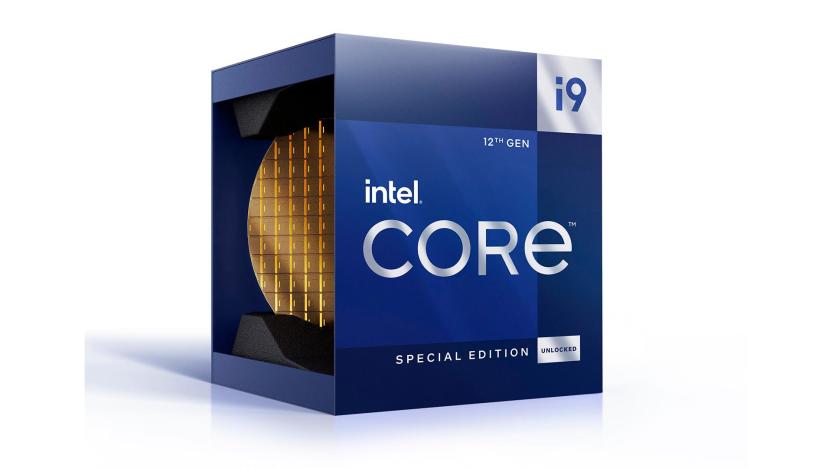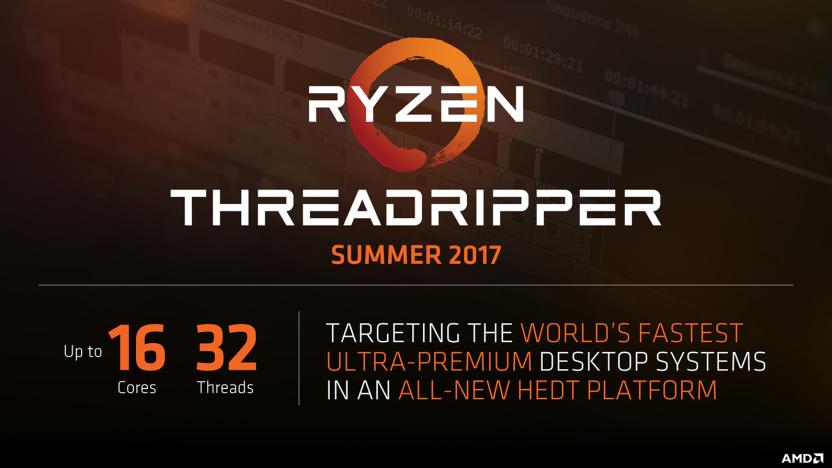16-core
Latest

Intel says its new 5.5GHz i9-12900KS is the world's fastest desktop processor
Intel has unveiled the Core i9-12900KS "Special Edition" CPU it claims is "the world's fastest desktop processor."

AMD's 16-core Ryzen 3950X is its fastest desktop processor ever
After getting some wins against Intel in the desktop enthusiast processor race, AMD is trying to run up the score with its latest model, the Ryzen 9 3950X. It has 16 cores/32 threads, a 3.5 Ghz base clock with up to 4.7 GHz boost (on two cores) and 105 watt power consumption (TDP), and costs $749, compared to $1,199 for Intel's 12-core i9-9920X. At the same time, AMD claims it outperforms the i9-9920X in gaming and even more so for content creation, where those extra cores can be best exploited.

AMD’s 16-core ‘Threadripper’ CPU is built for ultra-high-end PCs
AMD has unveiled Threadripper, a 16-core, 32-thread CPU that will take on Intel in one of its key markets: high-end desktop CPUs. The chip has been rumored for a while now, but AMD finally unveiled it at its analyst day, saying it would arrive by summer of 2017. The company may have wanted to get the launch in ahead of Intel, which will reportedly unveil a long-rumored 12-core Core i9 chip and new X99 HEDT (high-end desktop) platform sometime soon.

Homebrew 8-bit computer packs in 16 cores, multitasks like a champ
It looks like Jack Eisenmann has done it again. A couple of years after the hobbyist hacker built his first 8-bit computer, he's cobbled together yet another one, but this time with a whopping 16 cores. Appropriately dubbed the DUO Mega, the multicore wonder is made with 16 ATMega328p microcontrollers, each connected to an 8-bit data bus and designed to interpret a custom bytecode that runs the software. Compiled inside a nondescript plastic bin, the machine is also comprised of 16MHz crystal oscillators attached to each of the aforementioned cores, three Arduino UNO boards, 32kb of SRAM, 512kb of flash memory, eight breadboards, an Ethernet shield, a VGA out port and a multitude of components that combine to look like that mess of wires seen above. Because of all that processing power, this relatively primitive machine multitasks beautifully and can perform complicated calculations at an impressive clip. To get a demo of what this marvelous feat of DIY computing can do, have a peek at Eisenmann's video, complete with an 8-bit soundtrack, after the break.

Adapteva shows off production Parallella mini 'supercomputer' boards
With its ambitious Parallella computing project funded on Kickstarter since last October, Adapteva's now showing off its first mass-production boards. These Raspberry Pi-esque devices are capable of supercomputer-like parallel computing performance thanks to power-sipping Epiphany multi-core accelerators. As proposed, both the $99 13GHz 16-core (26 gigaflops) and $199 45GHz 64-core accelerator (90 gigaflops) variants make an appearance in the pictures. The company is tweaking this initial batch of 10 to test various functionalities, with its current update noting that getting Linux to boot off the boards is the next step in testing. Final units are still slated to arrive on doorsteps during the summer, and hardware schematics will eventually be available as open source-info -- after all, the Parallella has always been pitched as an open undertaking. Those enthused by circuits and the boards they live on will find a path to more info at the source link.

Insert Coin: The Parallella project dreams of $99 supercomputers
In Insert Coin, we look at an exciting new tech project that requires funding before it can hit production. If you'd like to pitch a project, please send us a tip with "Insert Coin" as the subject line. Parallel computing is normally reserved for supercomputers way out of the reach of average users -- at least at the moment, anyway. Adapteva wants to challenge that with its Parallella project, designed to bring mouth-watering power to a board similar in size to the Raspberry Pi for as little as $99. It hopes to deliver up to 45GHz (in total) using its Epiphany multicore accelerators, that crucially, only chug 5 watts of juice under normal conditions. These goliath speeds currently mean high costs, which is why they need your funds to move out of the prototype stage and start cheap mass production. Specs for the board are as follows: a dual-core ARM A9 CPU running Ubuntu OS as standard, 1GB RAM, a microSD slot, two USB 2.0 ports, HDMI, Ethernet and a 16- or 64-core accelerator, with each core housing a 1GHz RISC processor, all linked "within a single shared memory architecture." An overriding theme of the Parallella project is the openness of the platform. When finalized, the full board design will be released, and each one will ship with free, open-source development tools and runtime libraries. In addition, full architecture and SDK documentation will be published online if-and-when the Kickstarter project reaches its funding goal of $750,000. That's pretty ambitious, but we're reminded of another crowd-funded venture which completely destroyed an even larger target. However, that sum will only be enough for Adapteva to produce the 16-core board, which reportedly hits 13GHz and 26 gigaflops, and is expected to set you back a measly $99. A speculative $3 million upper goal has been set for work to begin on the $199 64-core version, topping out at 45GHz and 90 gigaflops. Pledge options range from $99 to $5,000-plus, distinguished mainly by how soon you'll get your hands on one. Big spenders will also be the first to receive a 64-core board when they become available. Adapteva's Andreas Olofsson talks through the Parallella project in a video after the break, but if you're already sold on the tiny supercomputer, head over to the source link to contribute before the October 27th closing date.

AMD ships '16-core' Bulldozer-powered Opteron 6200
We seem to have mislaid our definition of fashionably late -- a fortnight after the promised "October" launch, systems packing AMD's Bulldozer-powered Opteron 6200 (formerly Interlagos) will commence shipping to enterprise customers. If you haven't been paying too much attention, you might just believe the claim about it having 16 cores -- Bulldozer's architecture has eight two-core modules rather than 16 independent ones. Despite the short delay and the conspicuous claims, the company reckons it's 84 percent faster, 73 percent more efficient and uses half the power of the equivalent Intel Xeon. At the same time, Sunnyvale firmed up news on the Valencia (Opteron 4200) and announced 2012's Opteron 3000 platform with the new Zurich chip -- designed to run on low-power web hosts. Enterprise customers can read the PR we've got after the break and then begin placing orders; the rest of us will have to keep waiting to see if Andre Yang can push his FX all the way to 9GHz.[Thanks, Khan]

AMD ships 16-core Bulldozer chips for servers, makes consumers wait their turn
AMD's Interlagos, its server-styled Bulldozer chip -- Mr. Opteron 6200 to you and me -- is being pushed out to retailers and OEMs ready for an October launch. AMD is calling it the first 16-core x86 processor, although as we know from the required reading, it has eight two-core shared modules rather than 16 independent ones. The chips are compatible with Socket G34 motherboards, but most of this first production run will go straight into supercomputer projects. AMD remains mute on progress of the consumer-level Zambezi, but rumors are that the company can't clock it fast enough to compete with Intel's Core i7 -- the very class that Bulldozer was designed to bury. [Thanks, Sebastian]

IBM kicks out energy-efficient 4.7GHz POWER6 processor
Nah, it's no BlueGene L supercomputer, but IBM's latest dual-core microprocessor runs at a cool 4.7GHz while sporting 8MB of total cache per chip. The device reportedly runs "twice as fast" and packs four times the cache as the POWER5, and boasts a processor bandwidth of 300Gbps. Interestingly, the massive power increase doesn't seem to come with a boost in energy requirements, as IBM claims that the 65-nanometer POWER6 somehow ups its game while "using nearly the same amount of electricity" as its predecessor. The company plans on shoving the new darling into the System p570 server, and preliminary testing showed that all four of the "most widely used performance benchmarks for Unix servers" were shattered by its CPU. Unfortunately, there's no word on pricing nor availability just yet, but we're anticipating a bit of sticker shock when it does finally land.[Via LinuxDevices]





